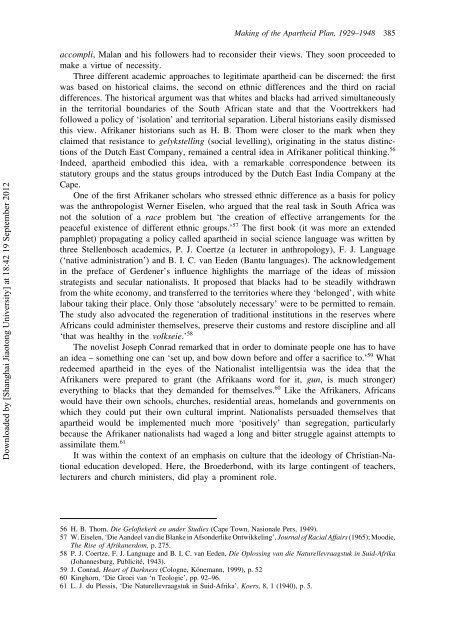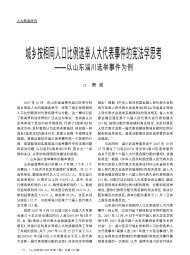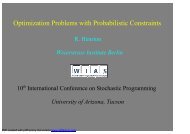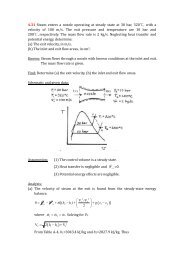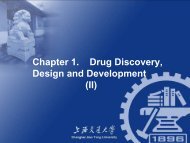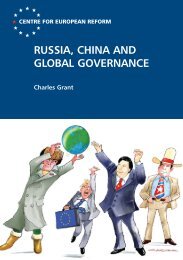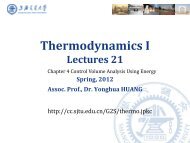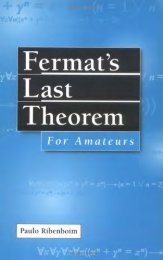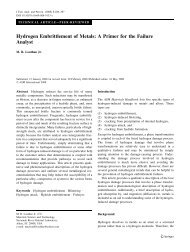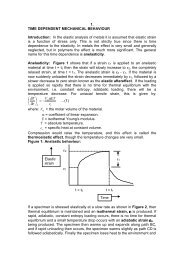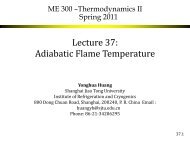The Making of the Apartheid Plan, 1929-1948* - CC
The Making of the Apartheid Plan, 1929-1948* - CC
The Making of the Apartheid Plan, 1929-1948* - CC
Create successful ePaper yourself
Turn your PDF publications into a flip-book with our unique Google optimized e-Paper software.
<strong>Making</strong> <strong>of</strong> <strong>the</strong> Apar<strong>the</strong>id <strong>Plan</strong>, <strong>1929</strong>–1948 385<br />
Downloaded by [Shanghai Jiaotong University] at 18:42 19 September 2012<br />
accompli, Malan and his followers had to reconsider <strong>the</strong>ir views. <strong>The</strong>y soon proceeded to<br />
make a virtue <strong>of</strong> necessity.<br />
Three different academic approaches to legitimate apar<strong>the</strong>id can be discerned: <strong>the</strong> first<br />
was based on historical claims, <strong>the</strong> second on ethnic differences and <strong>the</strong> third on racial<br />
differences. <strong>The</strong> historical argument was that whites and blacks had arrived simultaneously<br />
in <strong>the</strong> territorial boundaries <strong>of</strong> <strong>the</strong> South African state and that <strong>the</strong> Voortrekkers had<br />
followed a policy <strong>of</strong> ‘isolation’ and territorial separation. Liberal historians easily dismissed<br />
this view. Afrikaner historians such as H. B. Thom were closer to <strong>the</strong> mark when <strong>the</strong>y<br />
claimed that resistance to gelykstelling (social levelling), originating in <strong>the</strong> status distinctions<br />
<strong>of</strong> <strong>the</strong> Dutch East Company, remained a central idea in Afrikaner political thinking. 56<br />
Indeed, apar<strong>the</strong>id embodied this idea, with a remarkable correspondence between its<br />
statutory groups and <strong>the</strong> status groups introduced by <strong>the</strong> Dutch East India Company at <strong>the</strong><br />
Cape.<br />
One <strong>of</strong> <strong>the</strong> first Afrikaner scholars who stressed ethnic difference as a basis for policy<br />
was <strong>the</strong> anthropologist Werner Eiselen, who argued that <strong>the</strong> real task in South Africa was<br />
not <strong>the</strong> solution <strong>of</strong> a race problem but ‘<strong>the</strong> creation <strong>of</strong> effective arrangements for <strong>the</strong><br />
peaceful existence <strong>of</strong> different ethnic groups.’ 57 <strong>The</strong> first book (it was more an extended<br />
pamphlet) propagating a policy called apar<strong>the</strong>id in social science language was written by<br />
three Stellenbosch academics, P. J. Coertze (a lecturer in anthropology), F. J. Language<br />
(‘native administration’) and B. I. C. van Eeden (Bantu languages). <strong>The</strong> acknowledgement<br />
in <strong>the</strong> preface <strong>of</strong> Gerdener’s influence highlights <strong>the</strong> marriage <strong>of</strong> <strong>the</strong> ideas <strong>of</strong> mission<br />
strategists and secular nationalists. It proposed that blacks had to be steadily withdrawn<br />
from <strong>the</strong> white economy, and transferred to <strong>the</strong> territories where <strong>the</strong>y ‘belonged’, with white<br />
labour taking <strong>the</strong>ir place. Only those ‘absolutely necessary’ were to be permitted to remain.<br />
<strong>The</strong> study also advocated <strong>the</strong> regeneration <strong>of</strong> traditional institutions in <strong>the</strong> reserves where<br />
Africans could administer <strong>the</strong>mselves, preserve <strong>the</strong>ir customs and restore discipline and all<br />
‘that was healthy in <strong>the</strong> volkseie.’ 58<br />
<strong>The</strong> novelist Joseph Conrad remarked that in order to dominate people one has to have<br />
an idea – something one can ‘set up, and bow down before and <strong>of</strong>fer a sacrifice to.’ 59 What<br />
redeemed apar<strong>the</strong>id in <strong>the</strong> eyes <strong>of</strong> <strong>the</strong> Nationalist intelligentsia was <strong>the</strong> idea that <strong>the</strong><br />
Afrikaners were prepared to grant (<strong>the</strong> Afrikaans word for it, gun, is much stronger)<br />
everything to blacks that <strong>the</strong>y demanded for <strong>the</strong>mselves. 60 Like <strong>the</strong> Afrikaners, Africans<br />
would have <strong>the</strong>ir own schools, churches, residential areas, homelands and governments on<br />
which <strong>the</strong>y could put <strong>the</strong>ir own cultural imprint. Nationalists persuaded <strong>the</strong>mselves that<br />
apar<strong>the</strong>id would be implemented much more ‘positively’ than segregation, particularly<br />
because <strong>the</strong> Afrikaner nationalists had waged a long and bitter struggle against attempts to<br />
assimilate <strong>the</strong>m. 61<br />
It was within <strong>the</strong> context <strong>of</strong> an emphasis on culture that <strong>the</strong> ideology <strong>of</strong> Christian-National<br />
education developed. Here, <strong>the</strong> Broederbond, with its large contingent <strong>of</strong> teachers,<br />
lecturers and church ministers, did play a prominent role.<br />
56 H. B. Thom, Die Gel<strong>of</strong>tekerk en ander Studies (Cape Town, Nasionale Pers, 1949).<br />
57 W. Eiselen, ‘Die Aandeel van die Blanke in Afsonderlike Ontwikkeling’, Journal <strong>of</strong> Racial Affairs (1965); Moodie,<br />
<strong>The</strong> Rise <strong>of</strong> Afrikanerdom, p.275.<br />
58 P. J. Coertze, F. J. Language and B. I. C. van Eeden, Die Oplossing van die Naturellevraagstuk in Suid-Afrika<br />
(Johannesburg, Publicité, 1943).<br />
59 J. Conrad, Heart <strong>of</strong> Darkness (Cologne, Könemann, 1999), p. 52<br />
60 Kinghorn, ‘Die Groei van ‘n Teologie’, pp. 92–96.<br />
61 L. J. du Plessis, ‘Die Naturellevraagstuk in Suid-Afrika’, Koers, 8,1(1940), p. 5.


